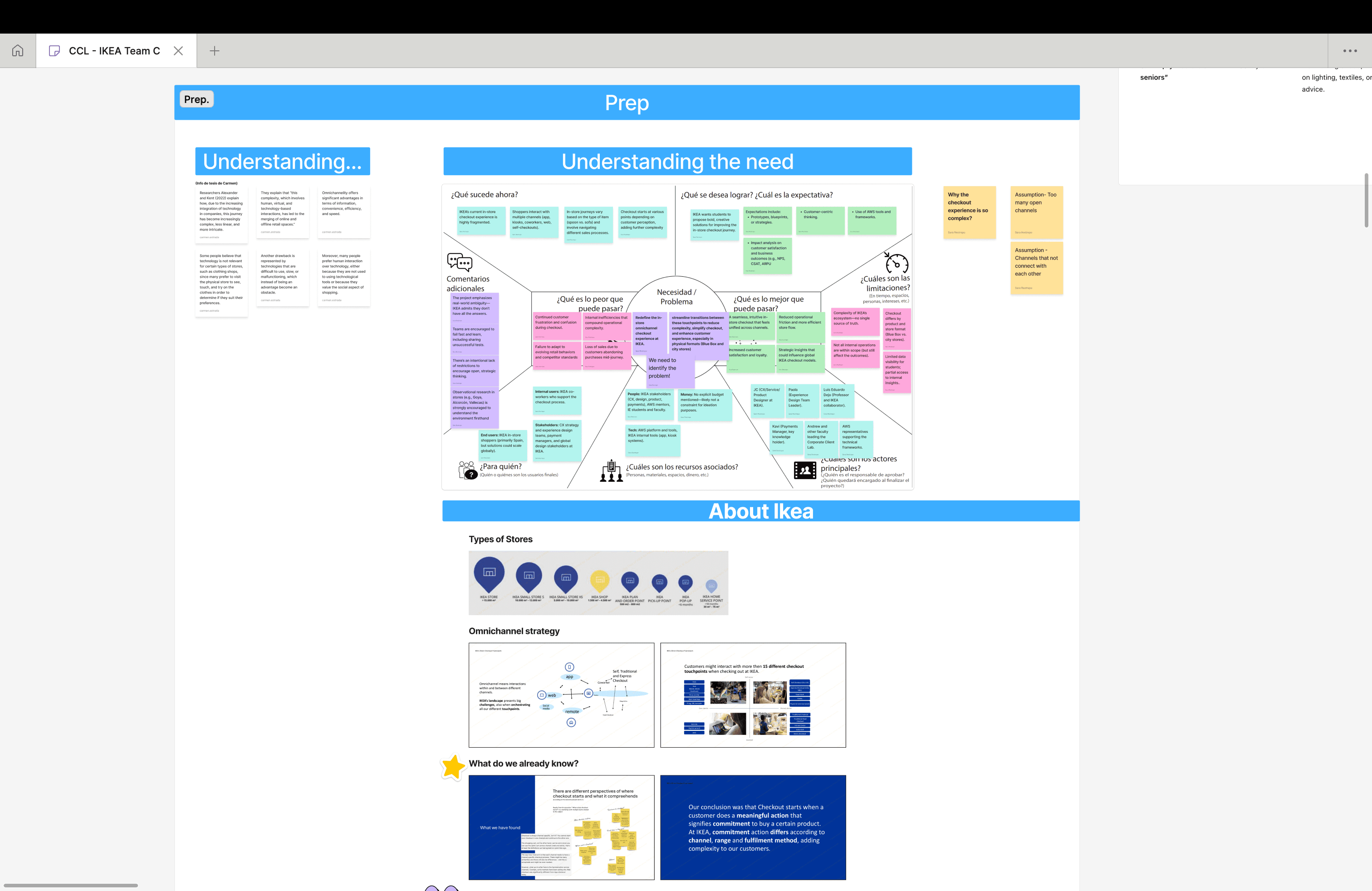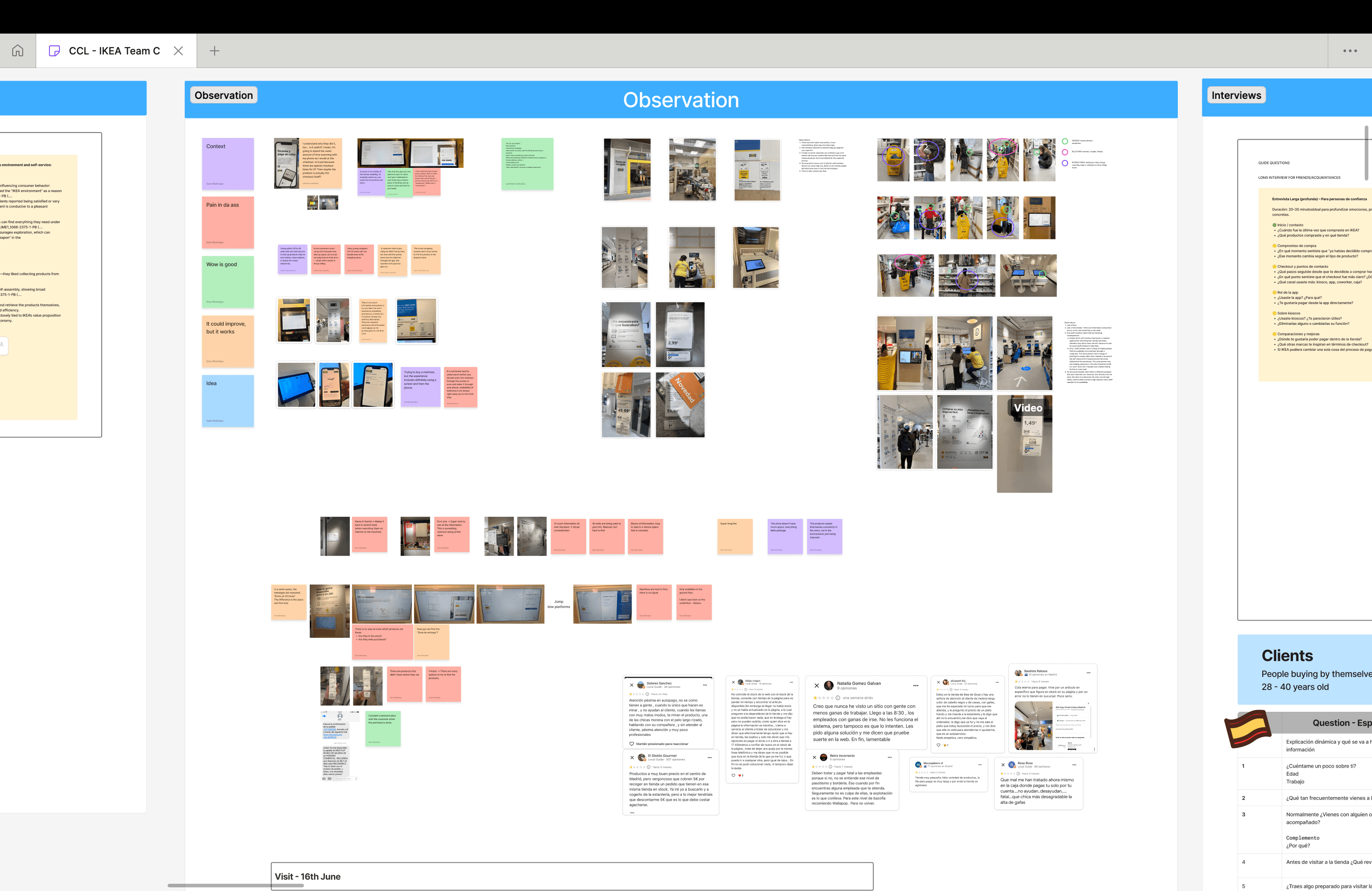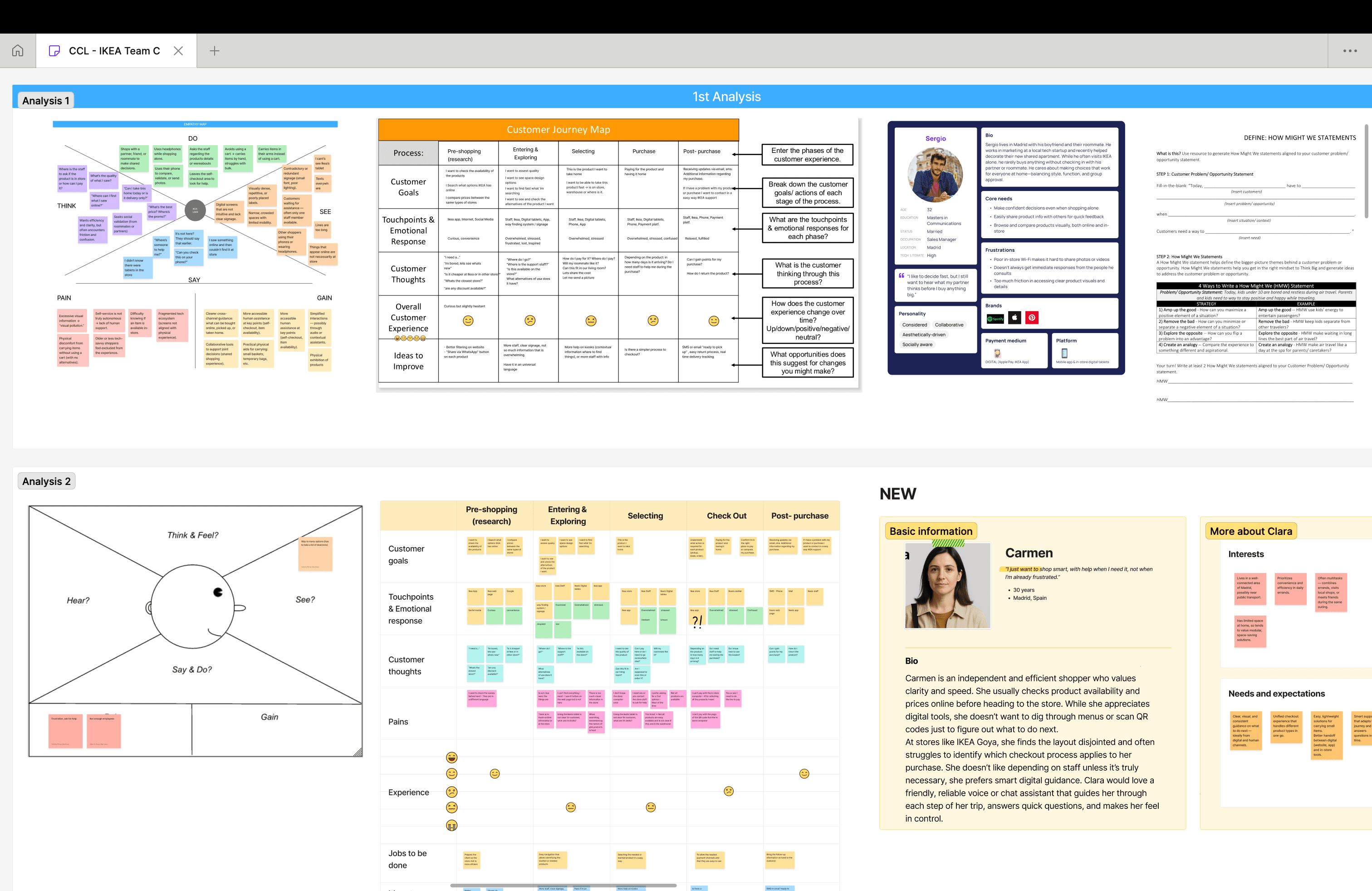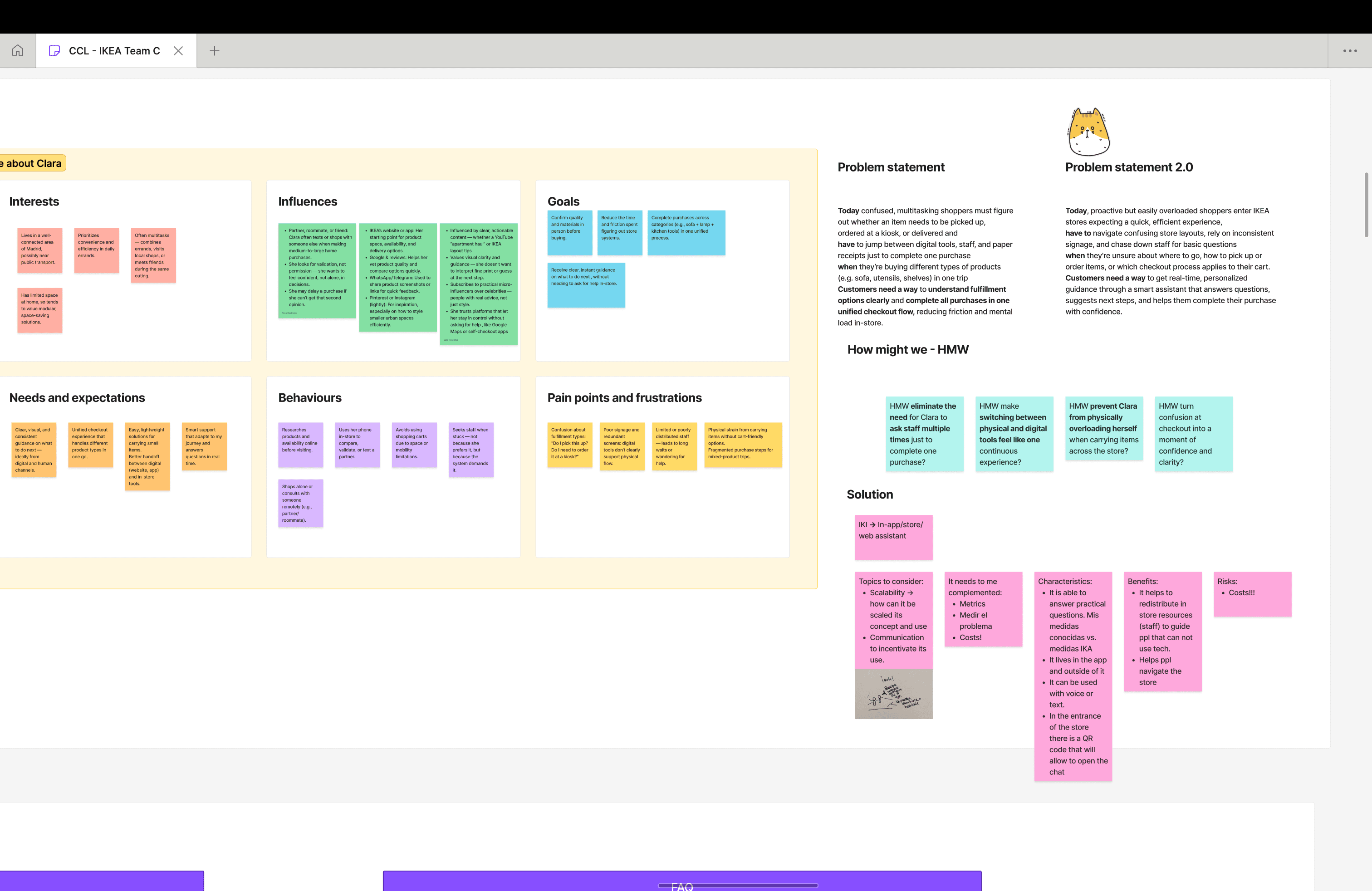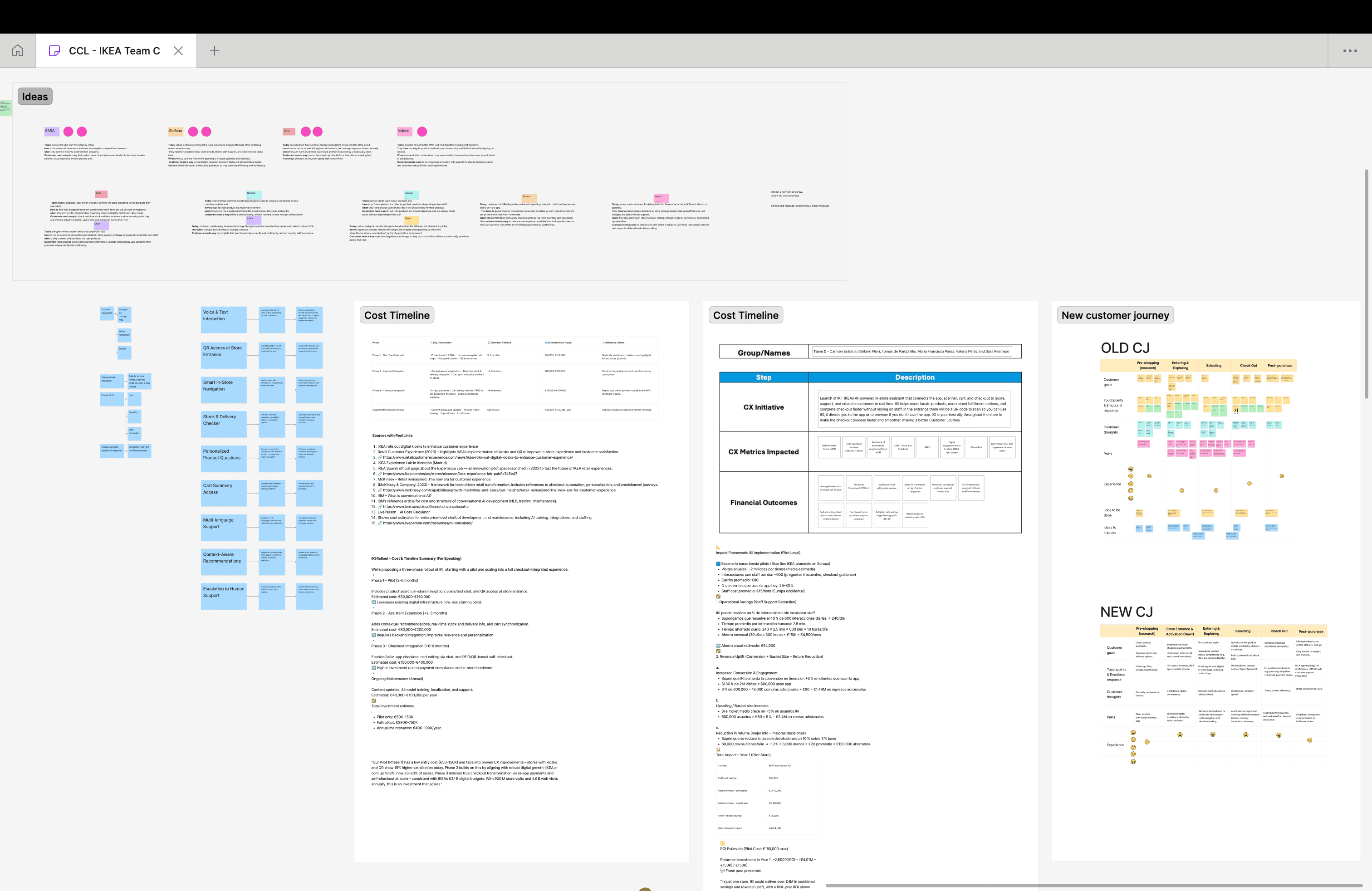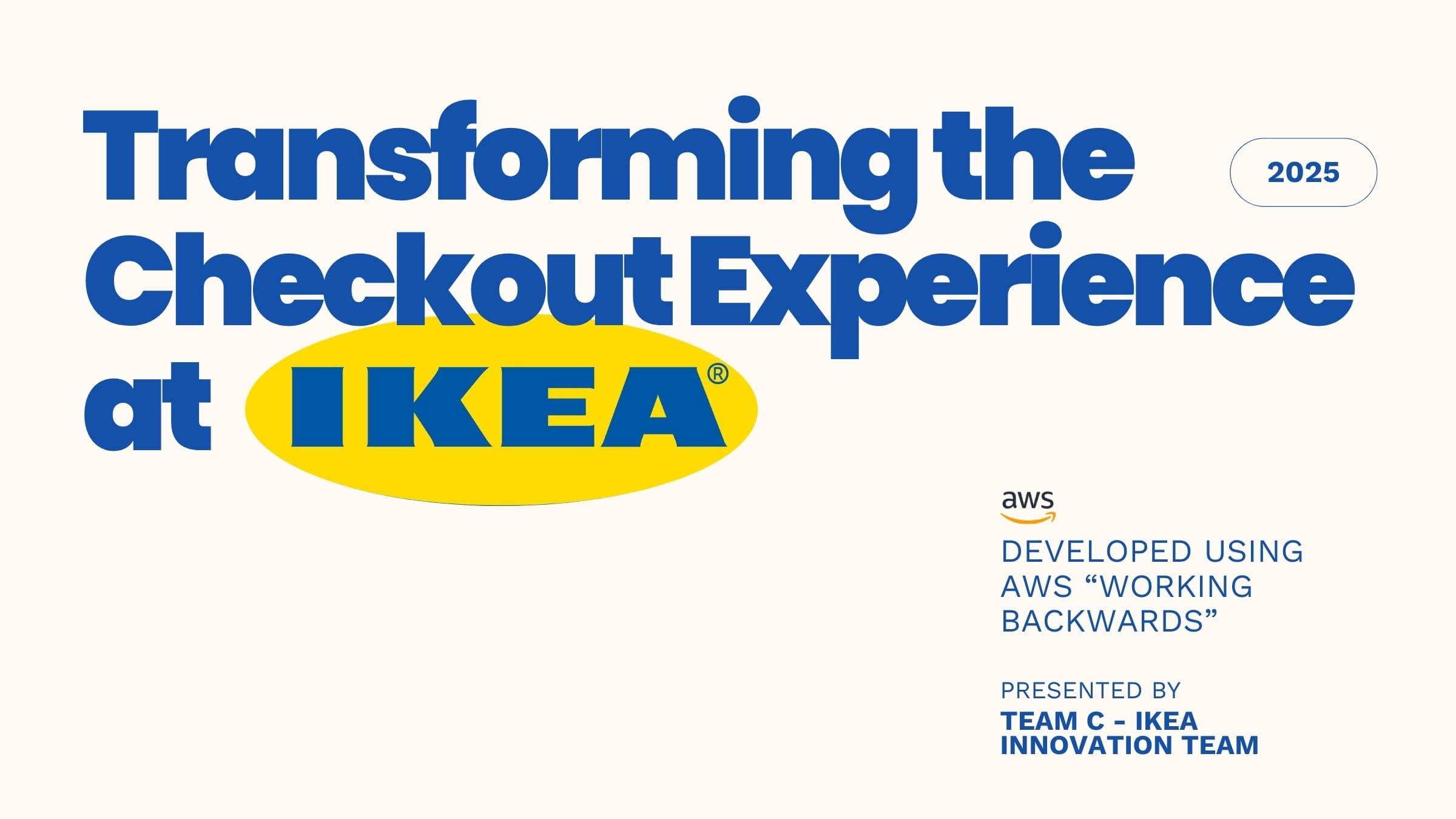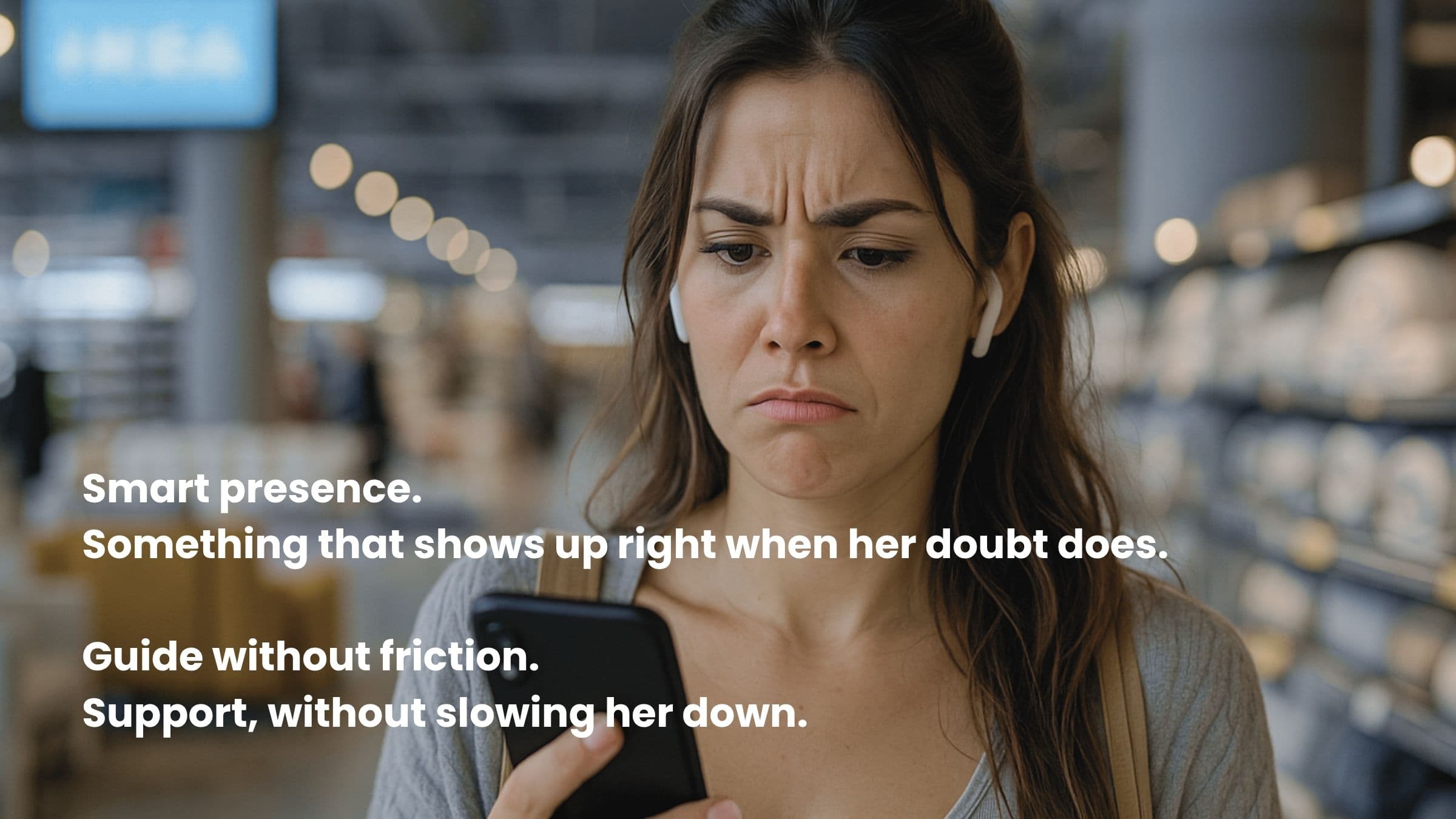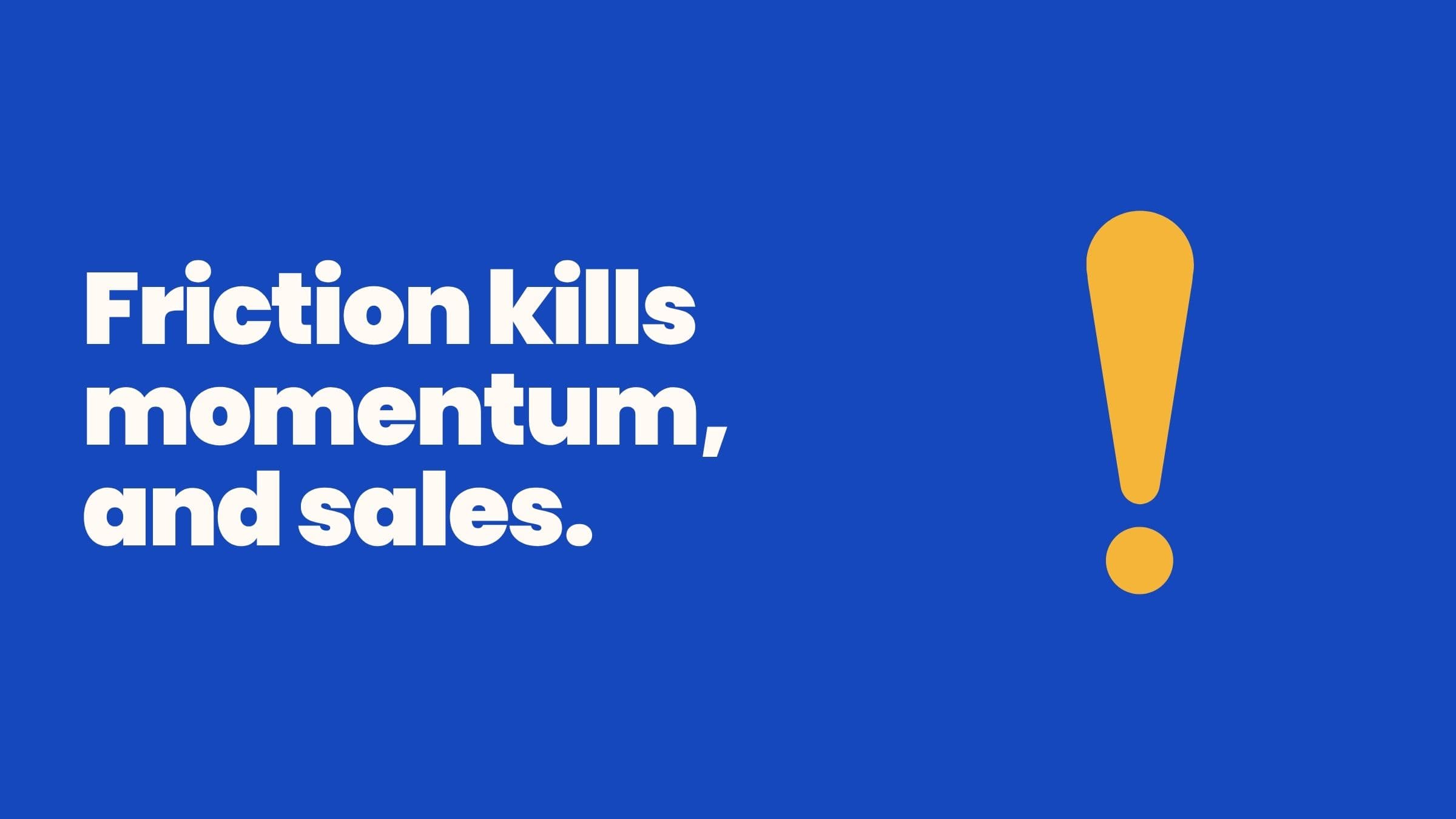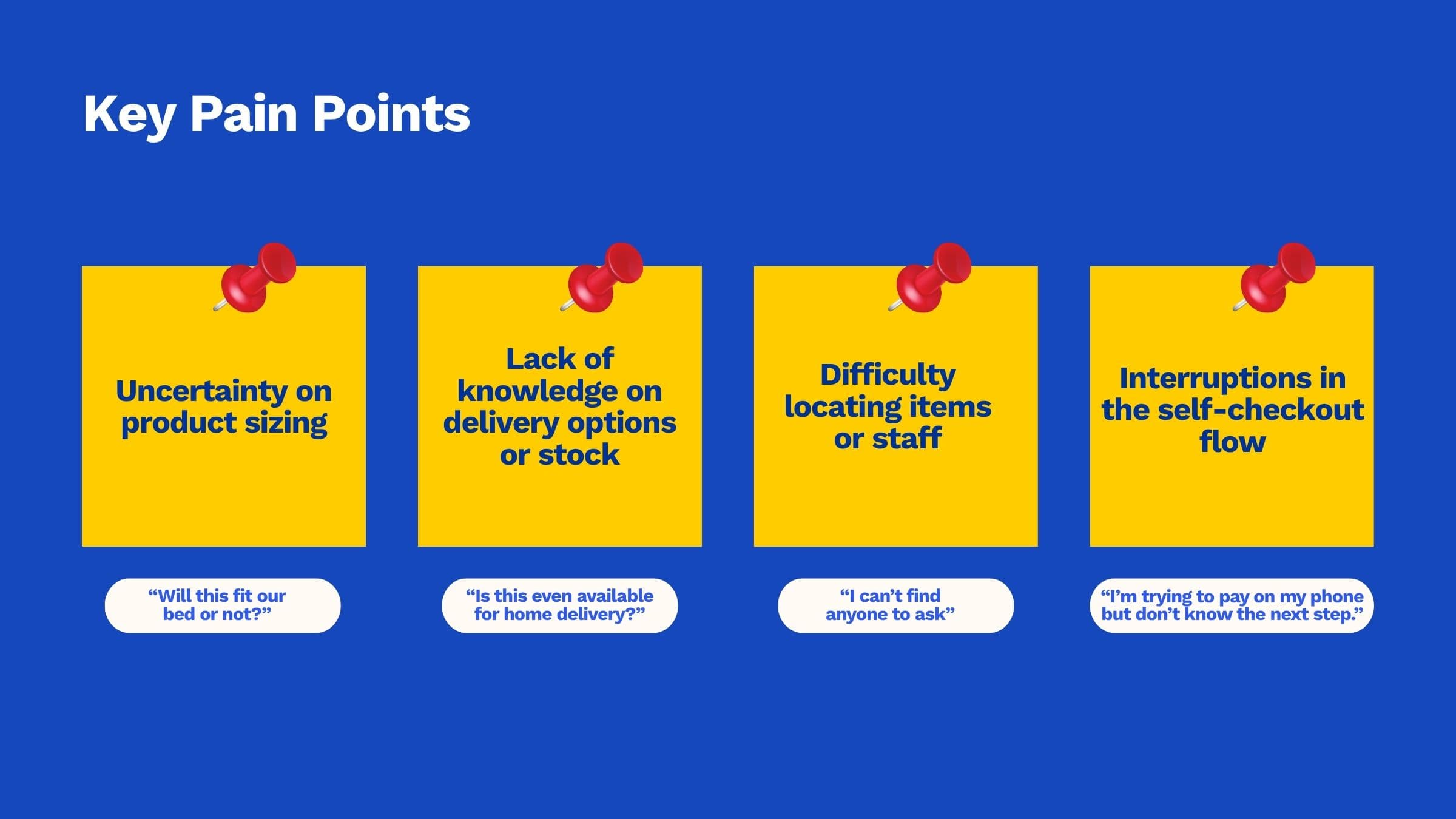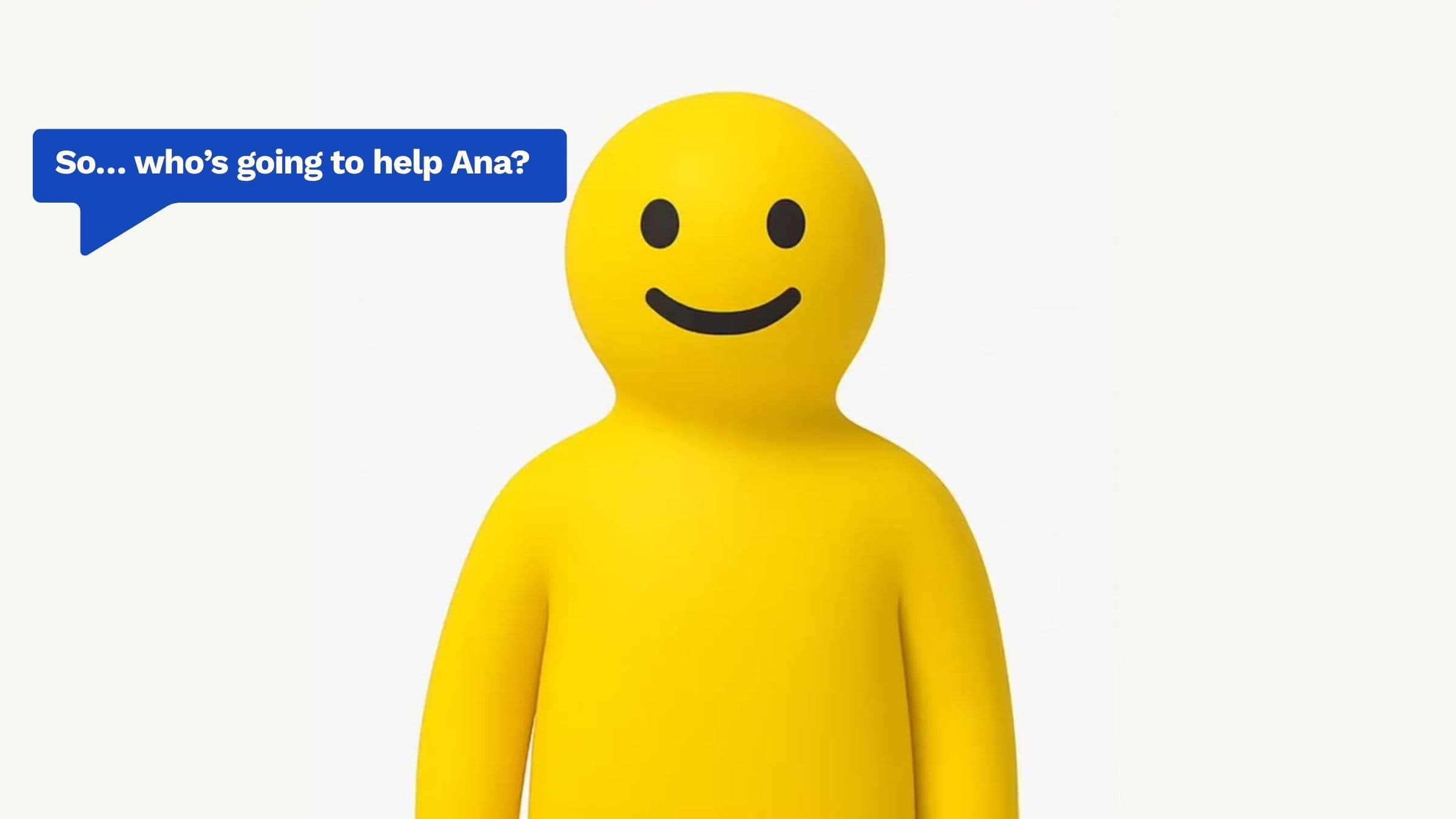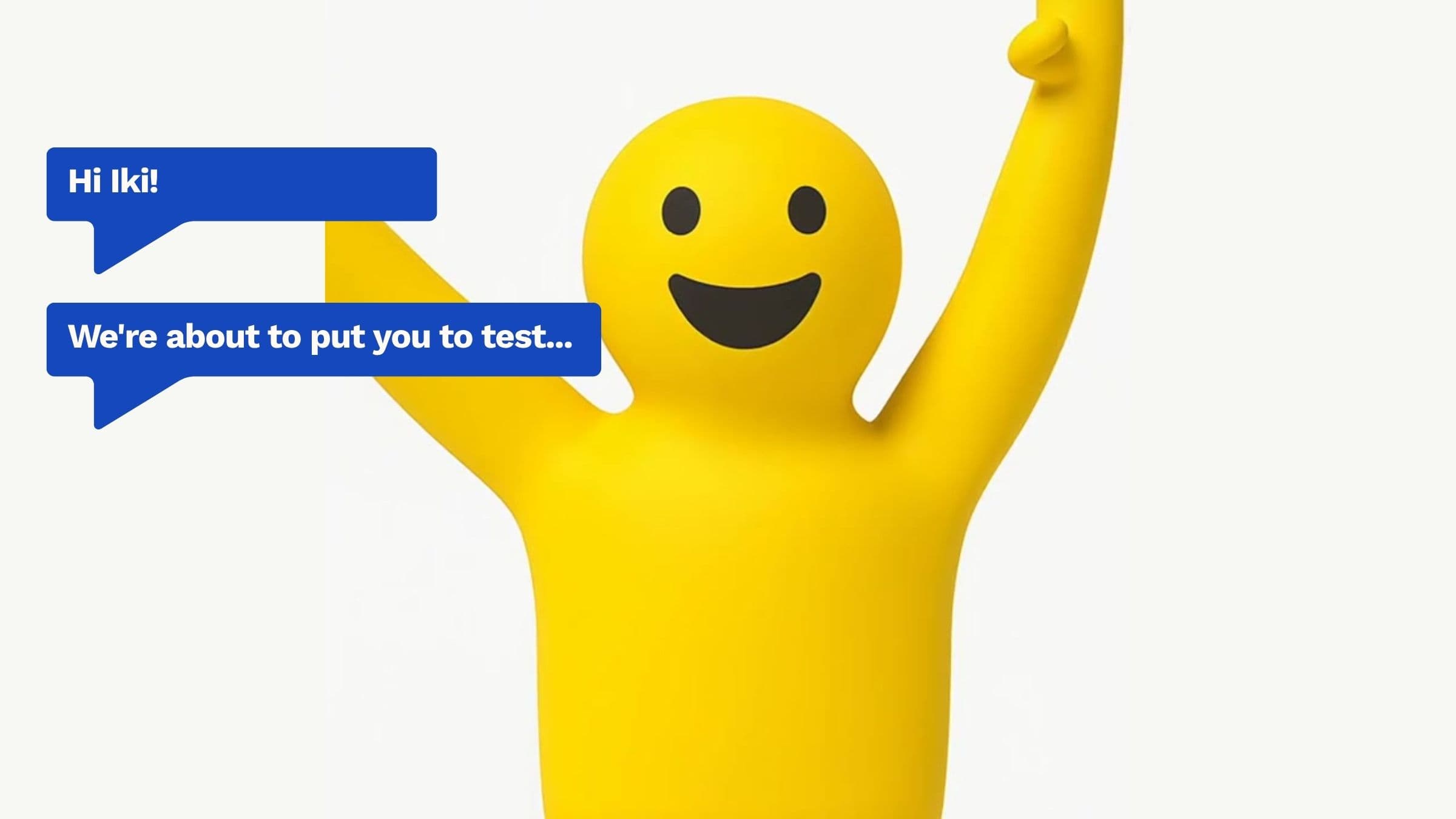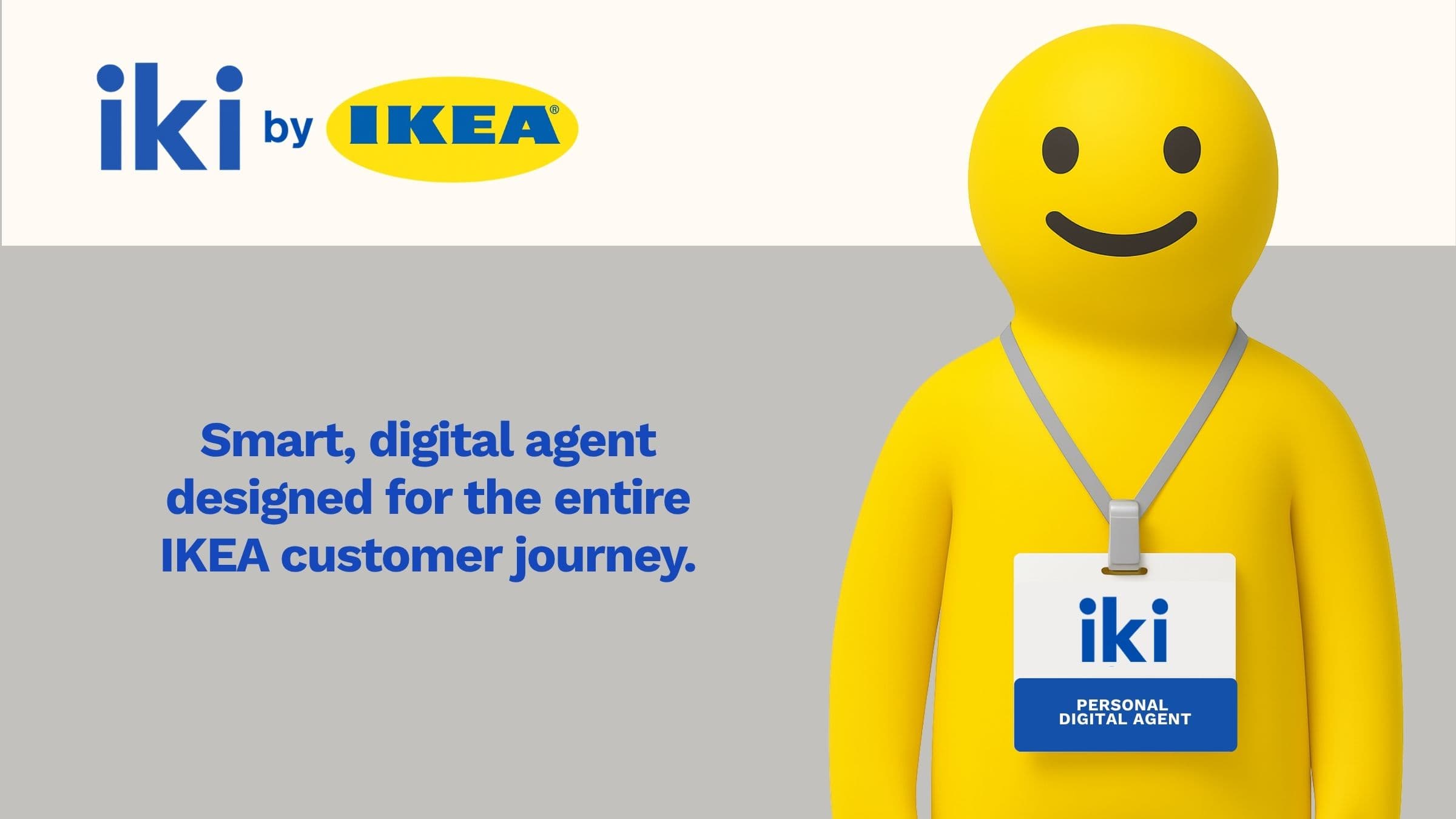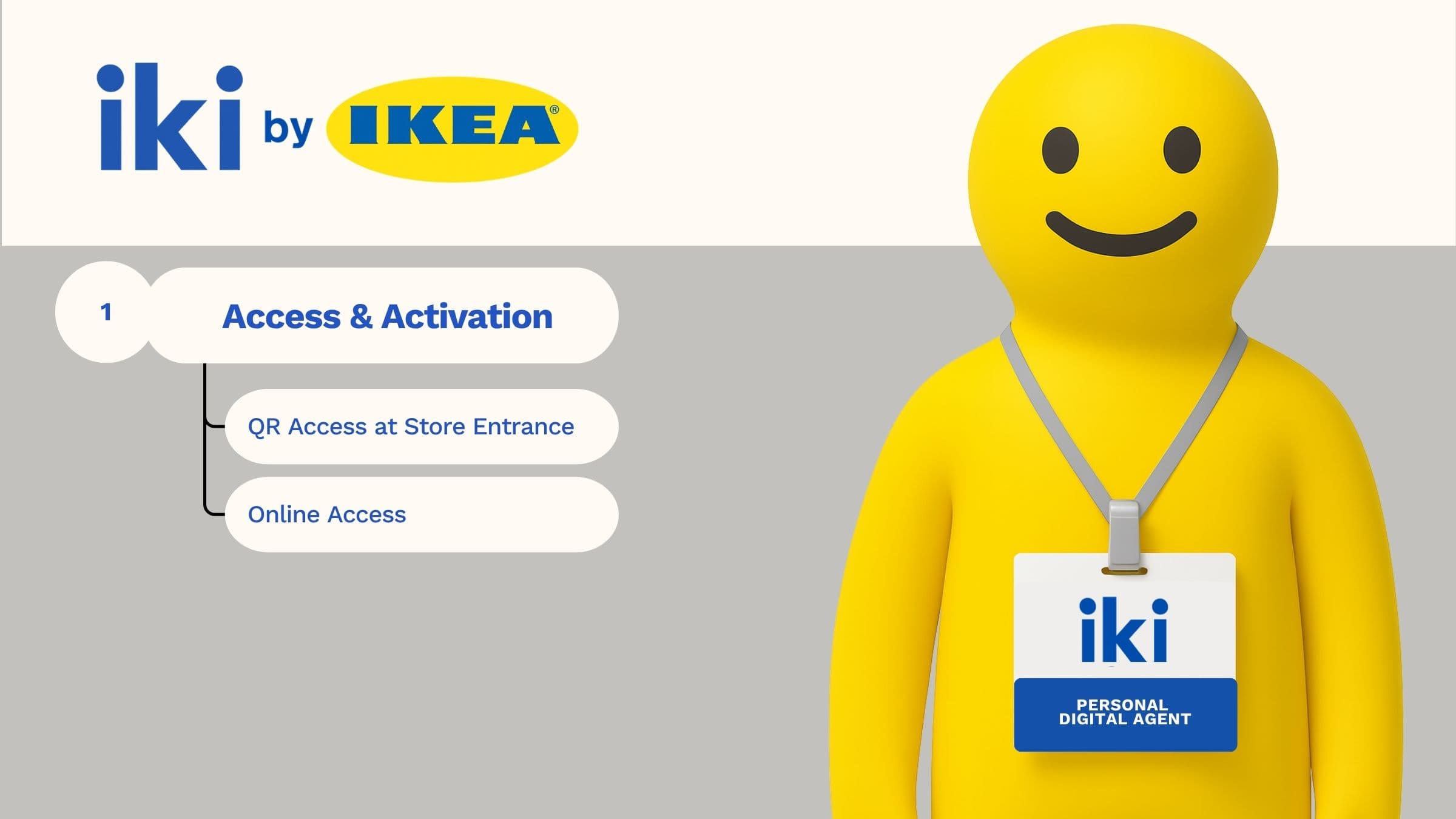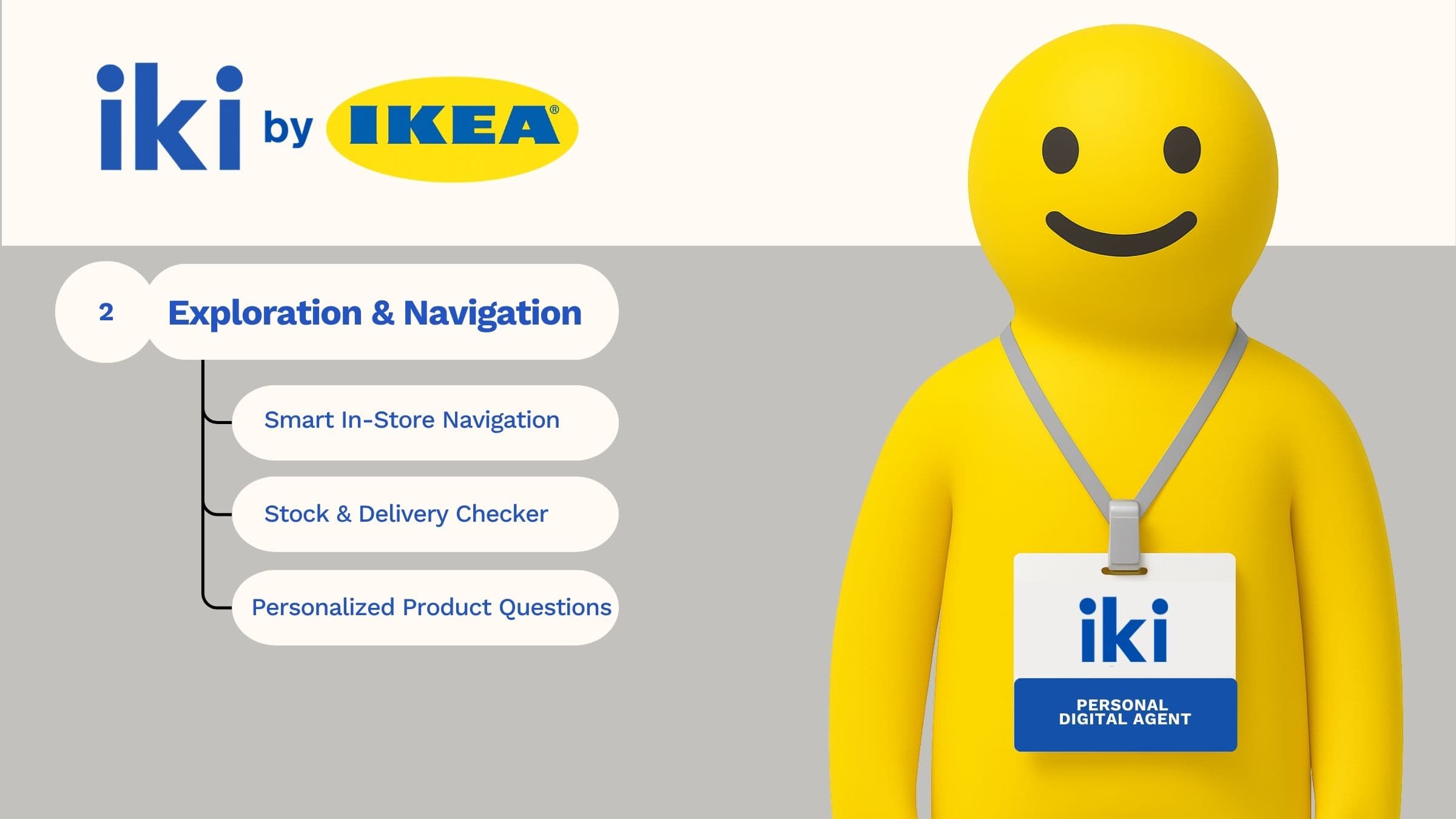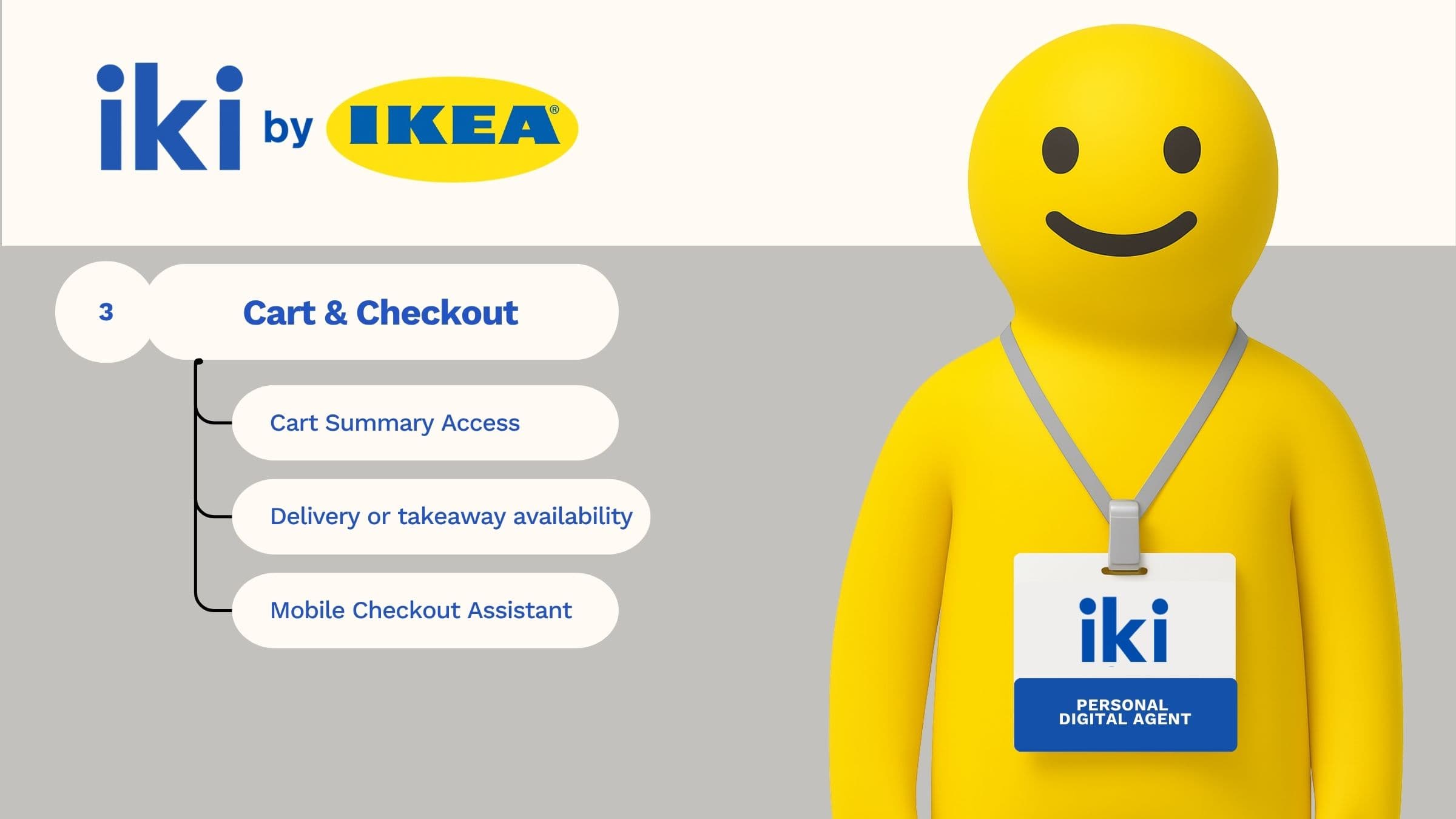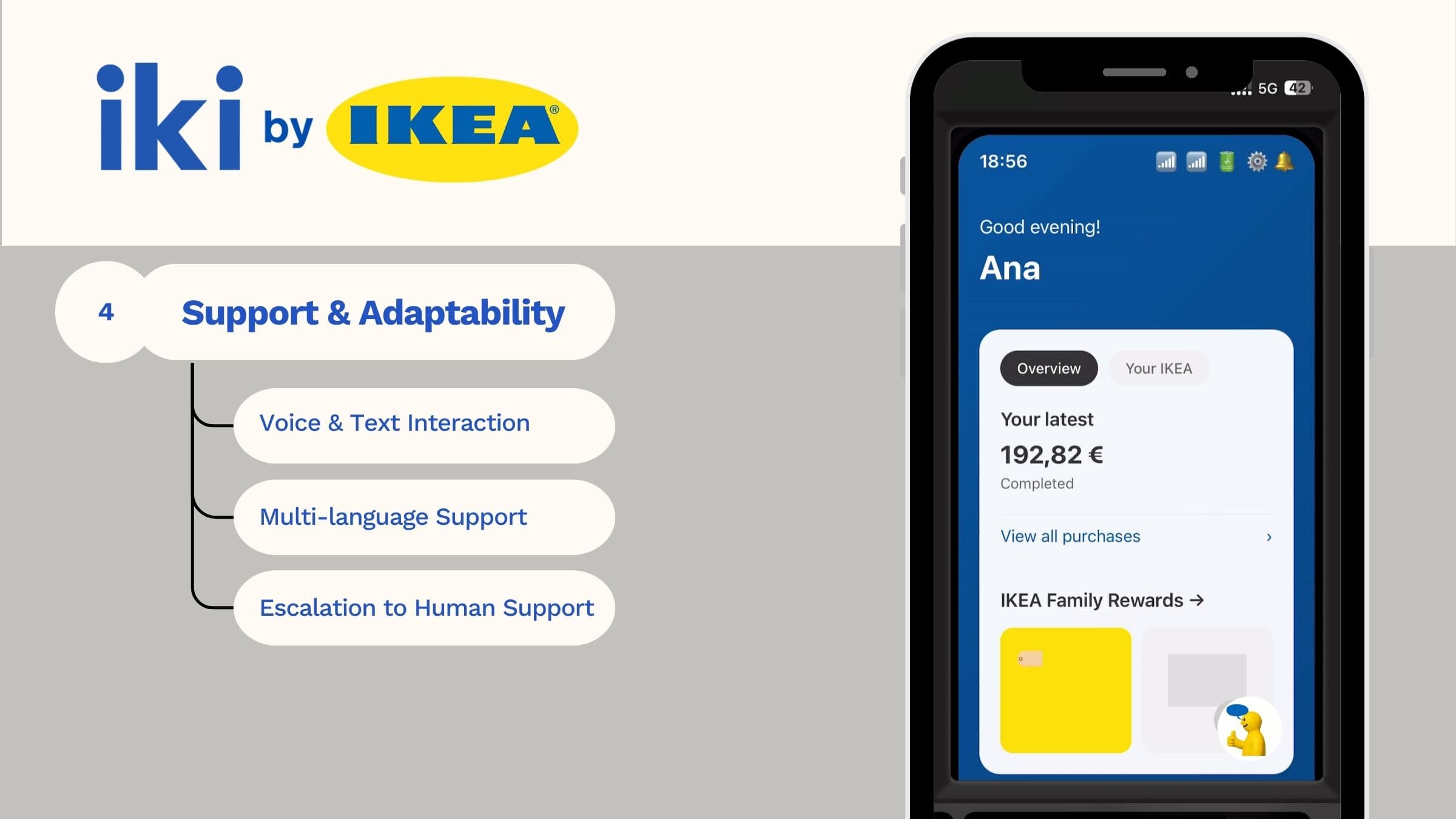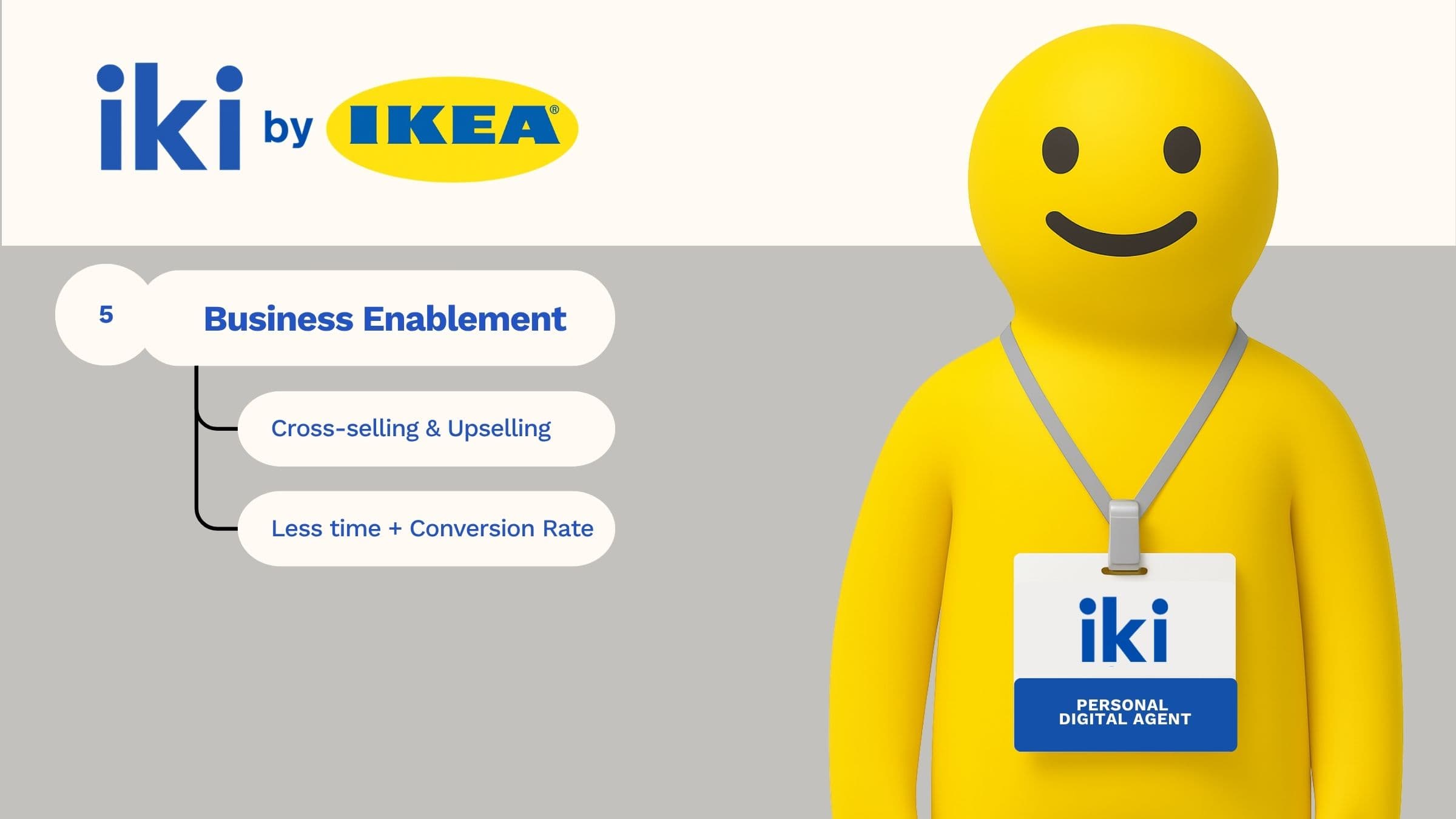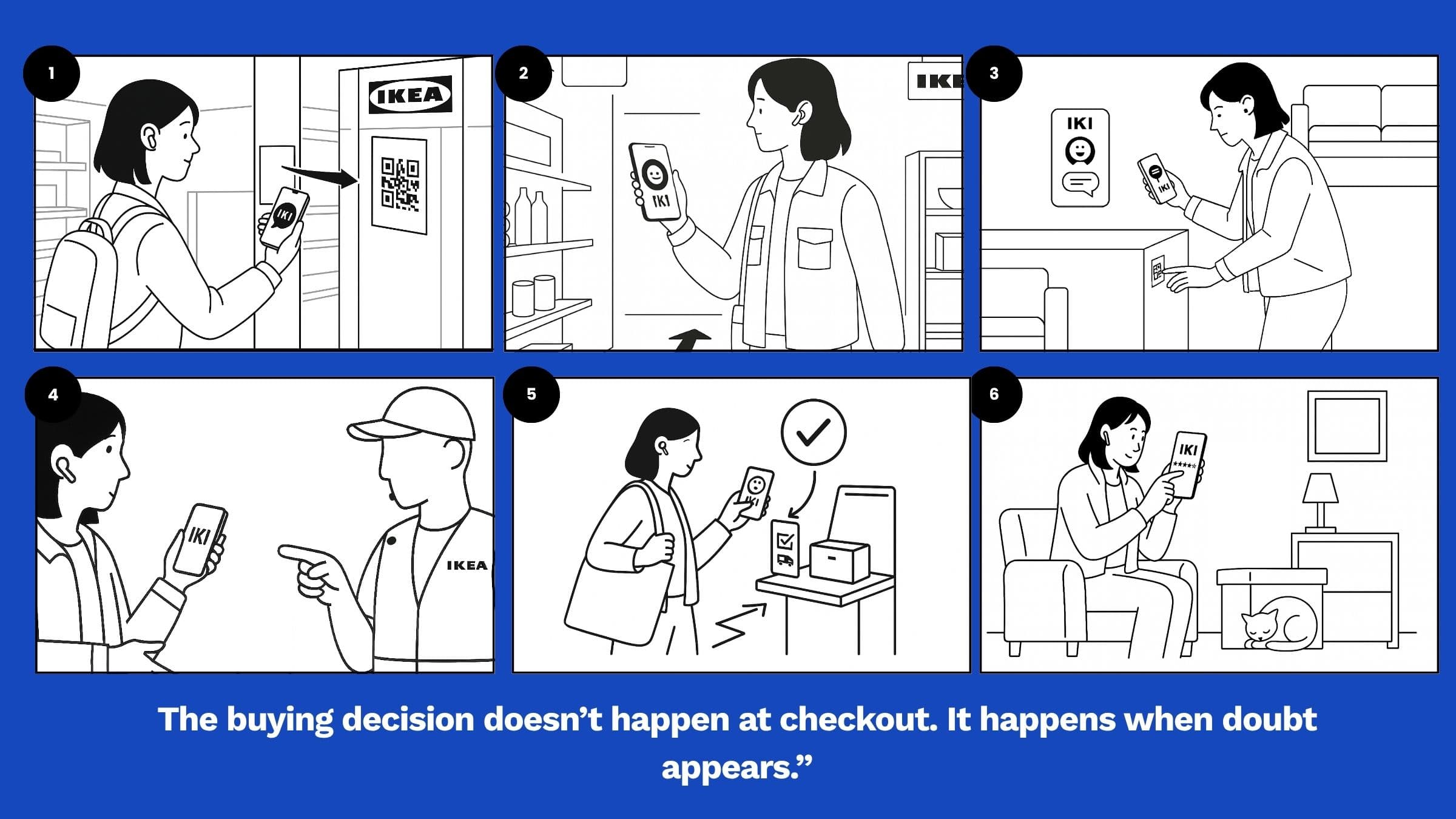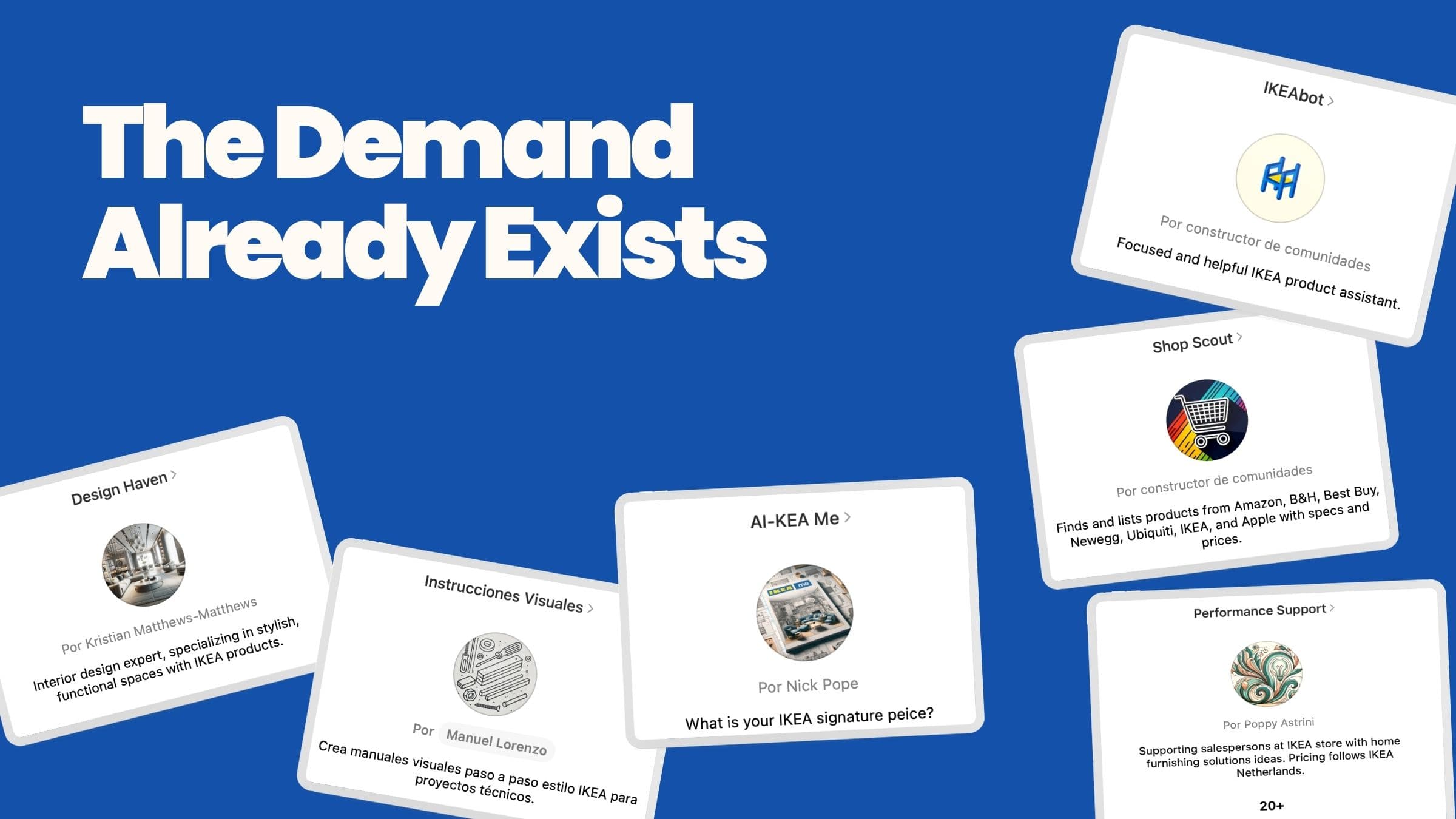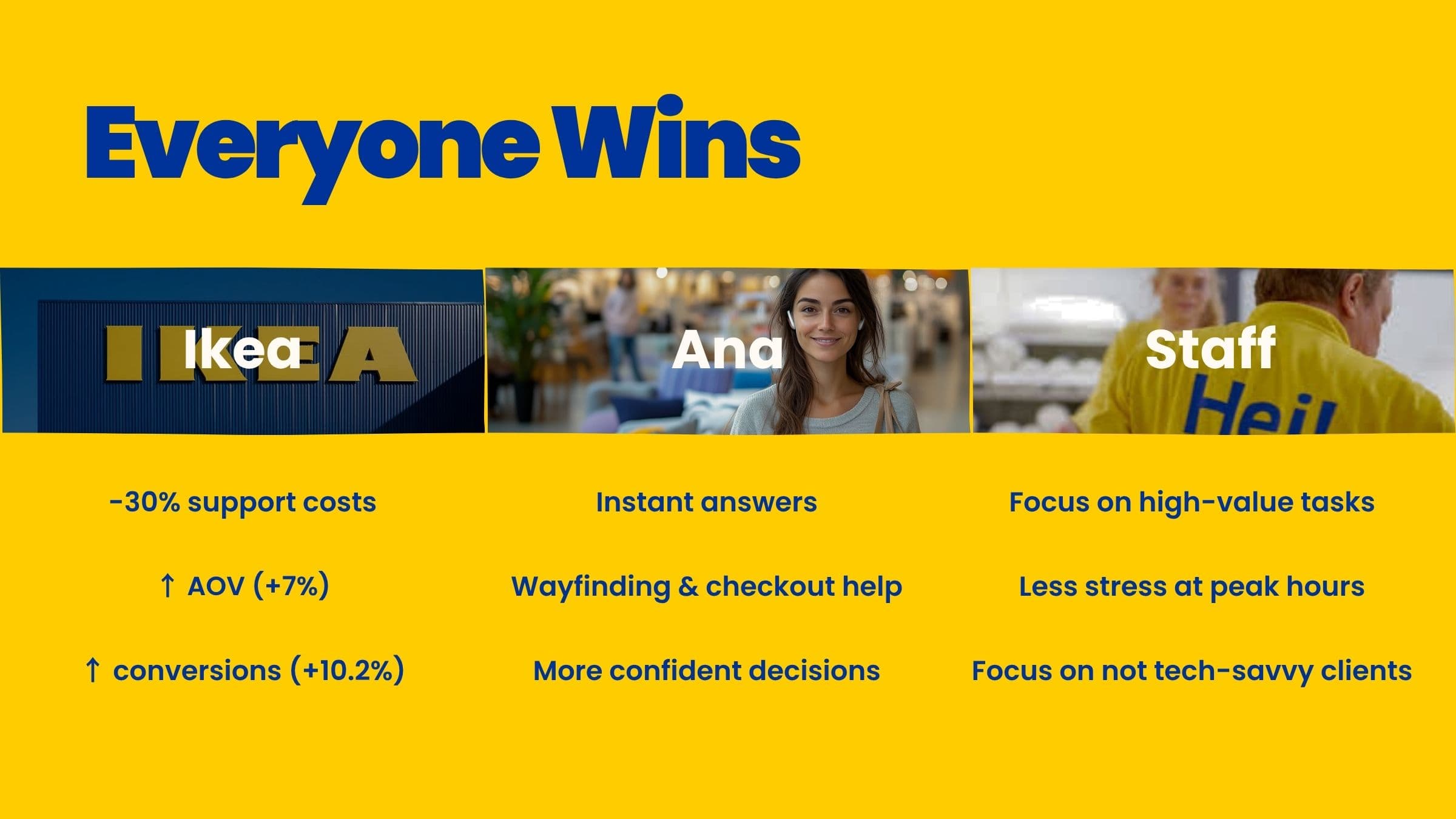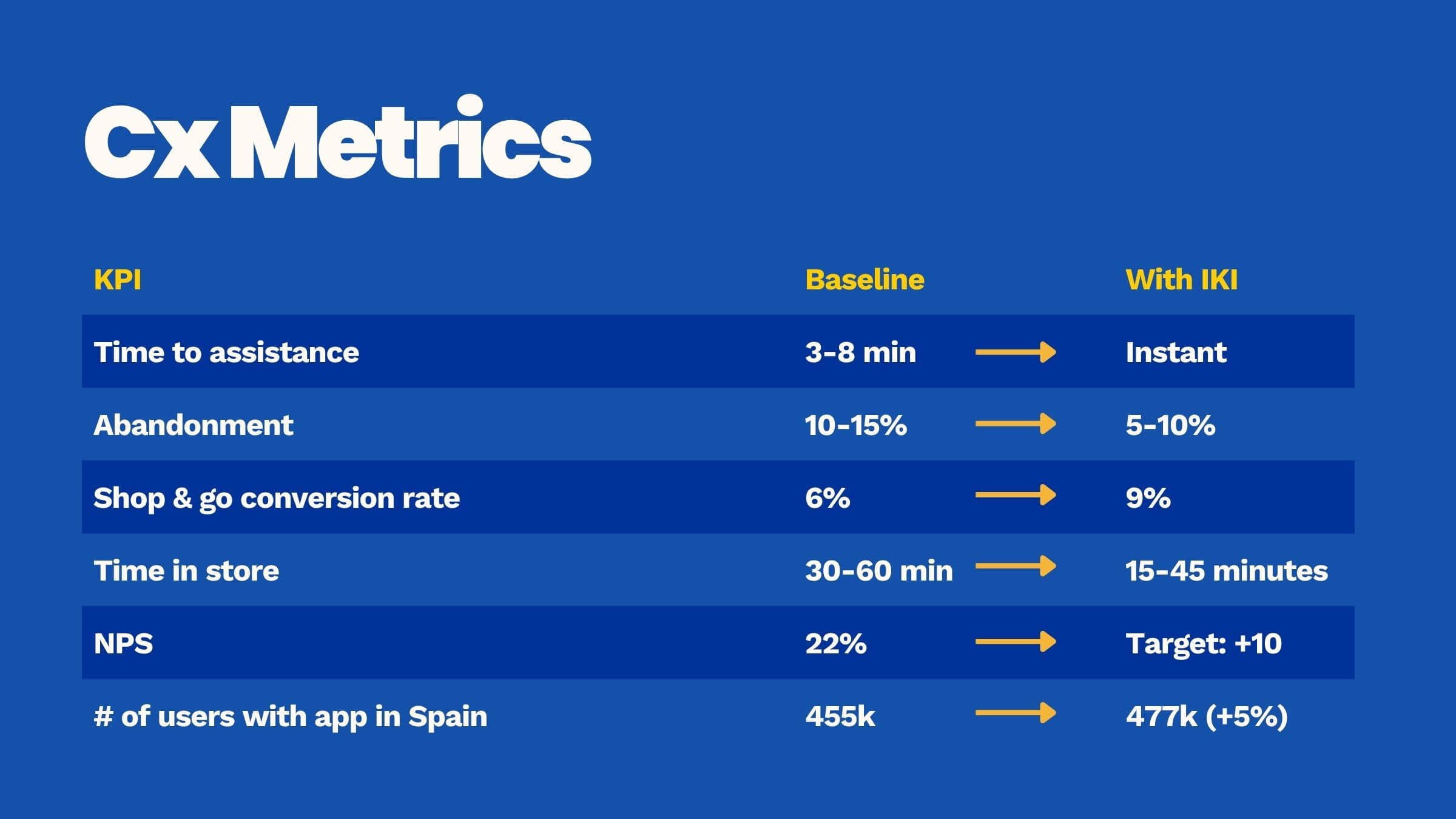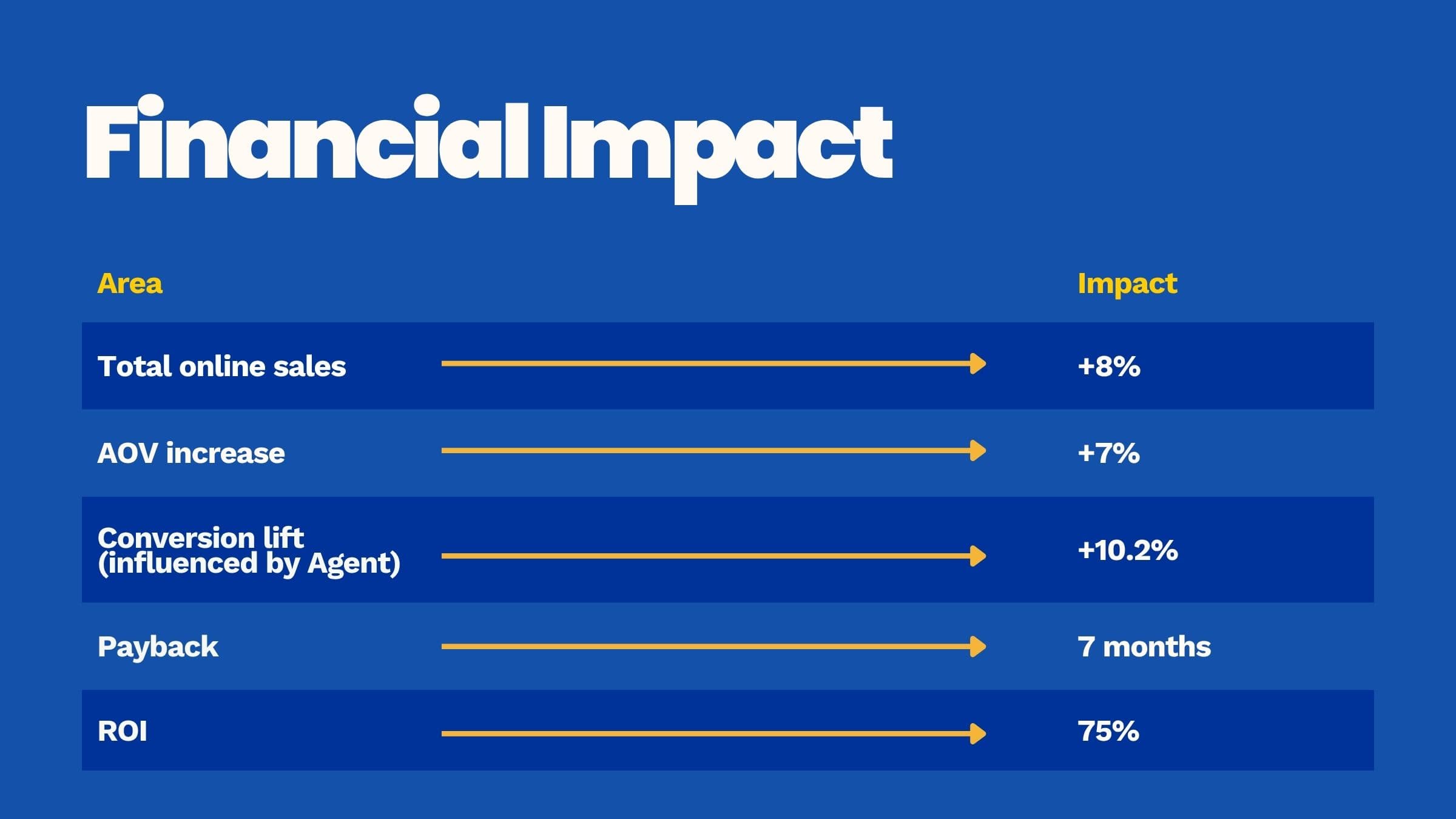IKI: A Smarter Checkout Journey at IKEA
Enhancing in-store decision-making for a smoother checkout
About the project
This project was developed during the Corporate Client Lab at IE Business School, in collaboration with IKEA and AWS. The original challenge was to improve the checkout experience at urban IKEA stores like IKEA Goya in Madrid. However, through our research, we realized that checkout is not a moment, but a journey. IKEA itself defines checkout as the moment a shopper commits to an item, which can happen at any point in the store or even before arriving. This insight expanded the scope of our work to support the full path to purchase.
Challenge
The real challenge was not just to streamline payment, but to reduce purchase abandonment by helping customers overcome the small moments of doubt or friction that occur before, during, and after the decision to buy.
We focused on solo shoppers, especially digital natives, who often arrive prepared with online research but still face moments of disorientation, uncertainty, or indecision once inside the store. These moments may seem small but they lead to missed opportunities for conversion.
Key barriers included:
• Minor disorientation within the store
• Decision fatigue from overstimulation
• Low-effort questions that staff could not always answer during peak hours
• A desire for confirmation rather than assistance
• A clear gap between the user’s expectations and the available support
Research and Insights
Our research revealed that Gen Z and young adult customers often arrived at the store already having done their homework. They knew what they wanted, but still encountered small yet impactful frictions (like not finding the product, understanding sizes, or knowing how to check out).
What they were really seeking was confirmation and clarity ,not help with decision-making, but help navigating. These tiny moments of confusion often led to abandoned purchases or reduced satisfaction.
To better understand these behaviors, we conducted a mixed-method research approach:
In-store observation
Mystery shopper sessions
Surveys and intercept interviews
Behavioral journey mapping
Desk research and benchmarking
We also discovered that a significant portion of our audience was already using tools like ChatGPT or Google to navigate their IKEA visits — sometimes instead of seeking help from staff. This reinforced the need for a digital companion built specifically for IKEA, speaking their language and responding in real time.
These insights led us to rethink not just the checkout point, but the overall store experience for solo visitors.
Solution
IKI is an in-app assistant that can also be activated by scanning QR codes throughout the store. It offers real-time help with wayfinding, product confirmation, payment guidance, and upselling recommendations.
IKI was inspired by the old IKEA man, the visual character used in IKEA assembly manuals. We reimagined him as IKI: the next-generation guide, still friendly and minimalist but adapted to digital contexts. Through gesture-based communication and empathetic design, IKI brings brand continuity and emotional relevance to the digital layer of the IKEA store.
Core features of IKI:
• Smart product finder based on prior web searches
• Checkout support tailored to store layout and inventory
• Playful, brand-aligned visual language
• Ability to assist without overwhelming
• Designed specifically for digital natives, but available to all
Impact
• Reduces abandonment caused by uncertainty or friction
• Improves store navigation and confidence during the visit
• Allows human staff to focus on customers who need more support
• Reintroduces a nostalgic brand character with strategic intent
• Strengthens IKEA’s positioning as a helpful and innovative retailer
Final learnings
This project showed us that user-centered innovation often begins with reframing the brief. By zooming out from “checkout” and paying close attention to how users behave across the entire journey, we designed a solution that is supportive without being invasive. IKI is not just an assistant. It is a reflection of IKEA’s DNA: simple, human, and quietly powerful.
